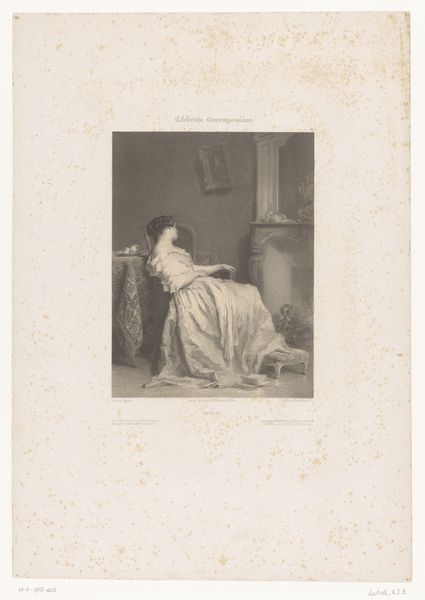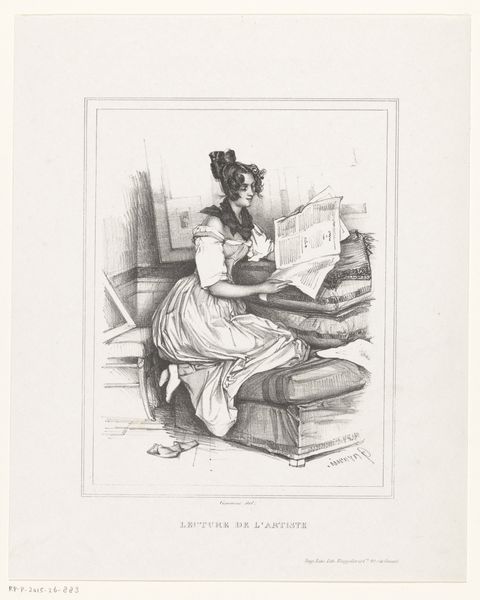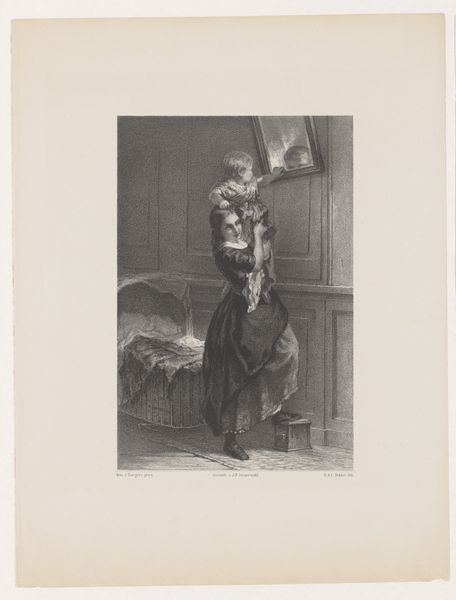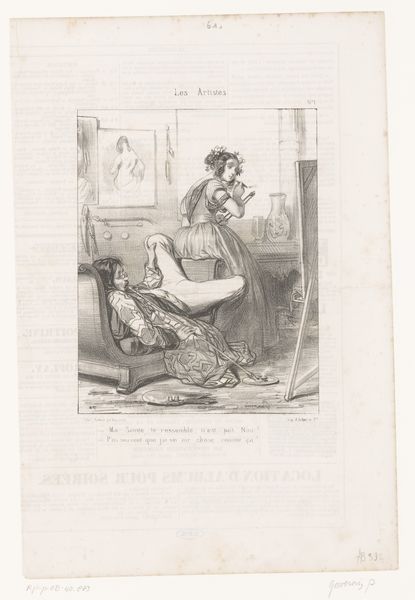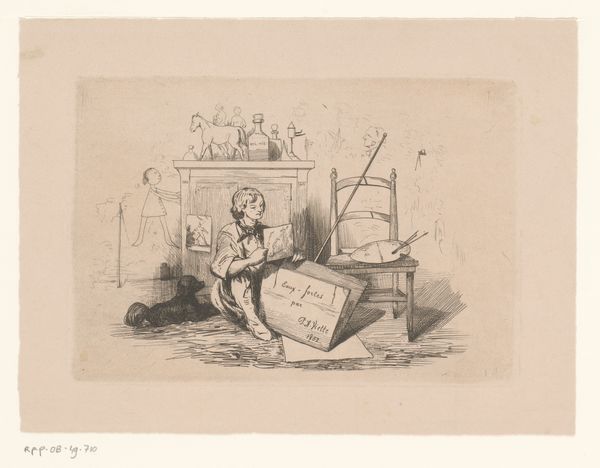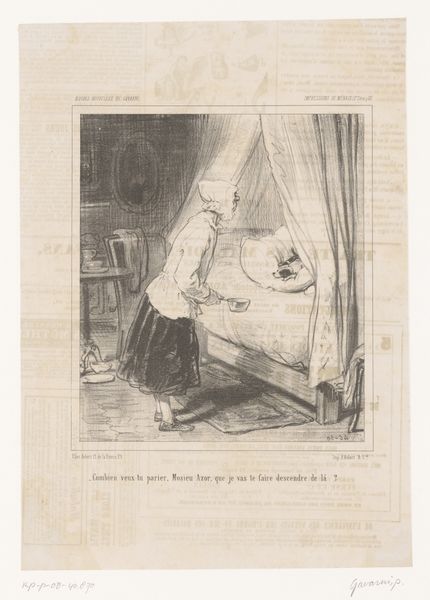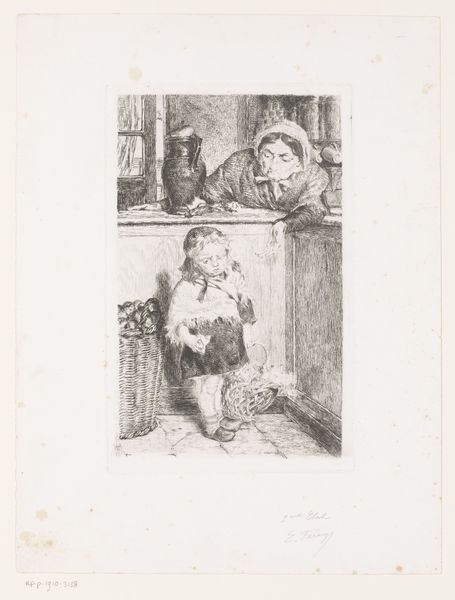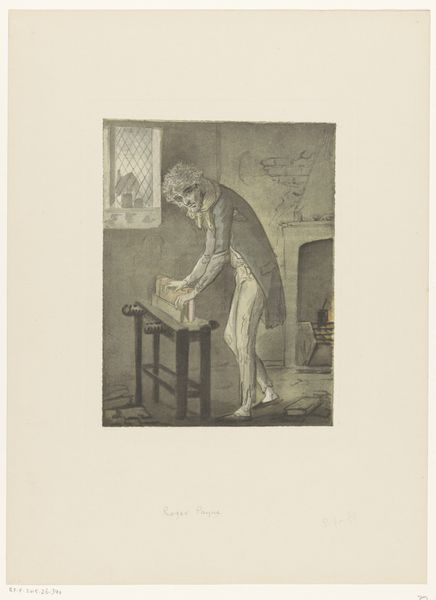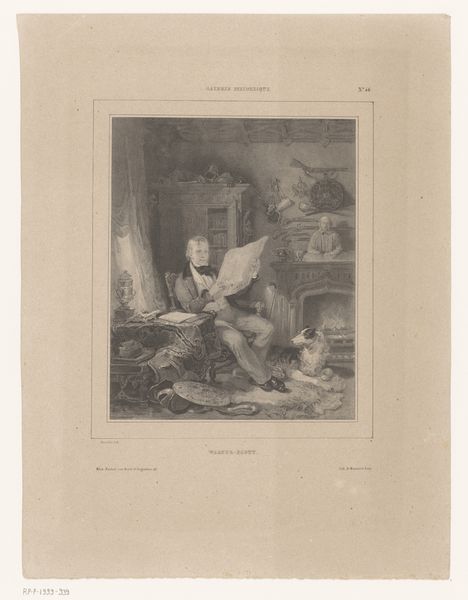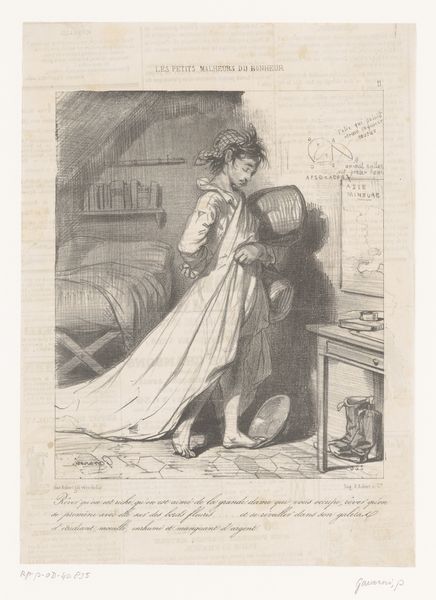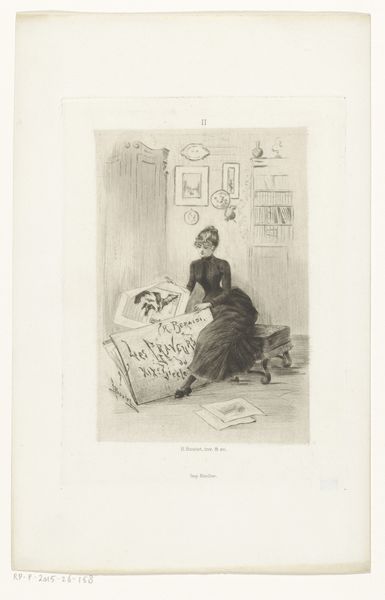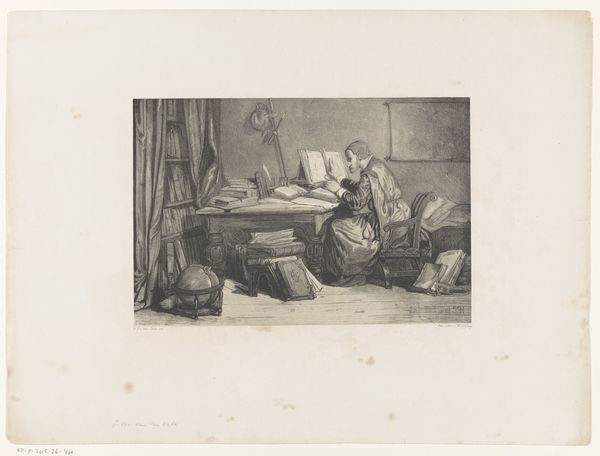
drawing, lithograph, print, paper
#
portrait
#
drawing
#
muted colour palette
#
lithograph
# print
#
caricature
#
figuration
#
paper
#
romanticism
#
line
#
genre-painting
#
tonal art
Dimensions: height 333 mm, width 248 mm
Copyright: Rijks Museum: Open Domain
Editor: This is "Dichter in gedachten verzonken" or "Poet Lost in Thought," a lithograph by Paul Gavarni, from 1844. The first thing I notice is the contrast between the chaotic papers and the stillness of the figure. It's quite engaging. How do you read the composition of this piece? Curator: Indeed. Focusing purely on its formal elements, note how Gavarni orchestrates our perception through contrasting textures and implied lines. The density of cross-hatching forming the sea of discarded paper directly opposes the relative smoothness describing the poet's face. Consider how this juxtaposition focuses our attention. Does this create a visual tension, in your view? Editor: Absolutely! It highlights his face but also exaggerates the feeling of being overwhelmed. What does the upward diagonal of the figure suggest to you? Curator: It activates the pictorial space and contributes to a dynamic reading. That upward trajectory fights against the static horizontal emphasis established by the desk and scattered papers, thus rendering an implied struggle. We could investigate this struggle through a Deleuzian lens, perhaps, questioning the virtual and the actual. Is there anything else in its visual structure that intrigues you? Editor: The guitar on the wall. It almost fades into the background, as a discarded prop. It looks to me that Gavarni made intentional choices for guiding the viewer's experience. Curator: Precisely. The visual hierarchy directs our interpretation. The interplay between clarity and ambiguity creates depth. We see an intentional layering of meaning, solely from its visual elements. Editor: Thinking about Gavarni’s use of line and form has given me a new appreciation for how artists can construct such complex narratives without color. Curator: And it prompts one to think about absence. What is *not* there – what is discarded, what fades – may be as critical to its impact as what is rendered in sharp relief.
Comments
No comments
Be the first to comment and join the conversation on the ultimate creative platform.

